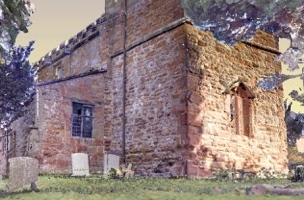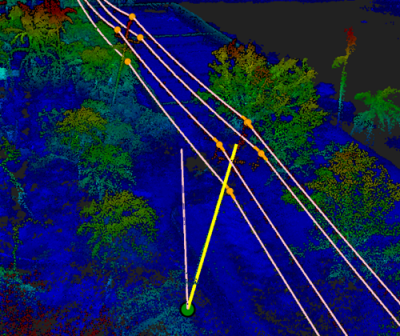To say that Edinburgh-based NCTech has a lot planned for this year would be an understatement. The company, best known for its iSTAR 360 degree panoramic digital-imaging device, is set to expand its reach even further into the point cloud world with three new solutions. At SPAR International 2015 they announced their new ColourCloud software, which colorizes point clouds rapidly, precisely, and automatically. They also announced CloudCreator, which creates of point clouds from iSTAR data, as well as the integration of their software with Veesus’ Arena4D.
According to company CTO and co-founder Neil Tocher, these products all build on the iSTAR to make the task of taking a 360-degree image and overlaying it onto a point cloud as easy as possible. Their core market, he explained, is engineers and surveyors, who “probably have 101 other things to do.”
NCTech’s new ColourCloud software makes that overlay process easier and more precise by enabling totally automatic calibration. “Previously there was a manual element to it,” Tocher explains. “We’ve totally removed all manual steps. It’s all fully automatic now.”
Here’s how it works: drop your scan files and your iSTAR files into ColourCloud and the software takes care of the rest. It uses calibration information that comes pre-loaded on the iSTAR and compares it to the point cloud to automatically match the two data sets and create a precise overlay. “We’re actually going into the raw pixel information from our sensors and mapping it directly to the laser scan. So there’s no stitching errors, no parallax errors. It’s a beautifully colored scan.”
Tocher explains that the workflow benefits extend beyond faster processing because the iSTAR offers higher quality photos than the cameras on most scanners, and operates much faster in the field. “So you can take a quick scan with your laser scanner–just do black and white–and then pop the iSTAR out and take a quick picture. It’s much quicker than asking the scanner to do both.”
ColourCloud also includes an upscaling function which takes low-resolution scans (about 5-7 million points) and overlays the iSTAR data to simulate a high quality scan (about 50 million points). As a result, Tocher says, you can save yourself the time needed to perform a series of high-resolution scans in the field when you only need that resolution for visual inspection. Instead, you can perform very fast low-res scans of the same environment and ColourCloud will produce a high-resolution, “visually attractive and dense” scan to show in presentations or to examine for areas of interest.
Tocher warns that the upscaled point clouds can be used for measuring, but. “It’ll be no more accurate than the original low-res scan. You should always rely on your actual scan for taking critical measurements.”
There’s a second component to this particular announcement–NCTech’s new CloudCreator software. The software, which Tocher says the very accurate iSTAR cameras were engineered for, creates point clouds directly from iSTAR data. “Instead of mapping the colors to the scan, what we are able to do is generate point clouds directly. We can show data that we’ve collected and point clouds that have come straight from iSTAR with no other software as part of that work process.”
To create a point cloud with iSTAR, Tocher says, the process is very fast. “So you move the iSTAR around and take a few pictures. Then, in the office, you run our new software and it will automatically register those images of the different locations together without using targets or spheres.” The device position is calculated in three-dimensional space and the point cloud is built using that positioning data.
Again, Tocher speaks a word of caution. “We’re not saying we’ve invented a product that means you don’t need a scanner. We’re saying this is a very fast and cost-effective way of gathering point cloud information as well as high-resolution imagery. If you’re aim is to create floor plans or want to do an initial survey, this will do. If you want to really measure with critical accuracy, scanners win.”
Scanners, however, require expertise. As Tocher explained, NCTech’s photogrammetry methods “will give you results very fast with no specialist skills whatsoever. It’s all about the automation.”
Last but not least, CloudCompare’s overlay functionality has been incorporated in Veesus’ Arena4D software. “With simply a click of a checkbox,” Tocher said, “as you import your scan, it automatically colorizes the scan so you don’t have to leave the program. Just point it to the relevant folder or file containing the iSTAR data.”
What’s next? Tocher was tight-lipped on this point, but hinted that NCTech has more products to announce in 2015. “There’s a whole range that are about to come out.” For instance, he said, expect to see more from CloudCreator in the future, including a mobile mapping feature that can generate point clouds from a vehicle-mounted iSTAR as you drive.
“And the beauty of it is that it is all automatic,” Tocher said in closing. “You don’t have to touch, you don’t have to do anything, it’s all automatically processed for you.”






